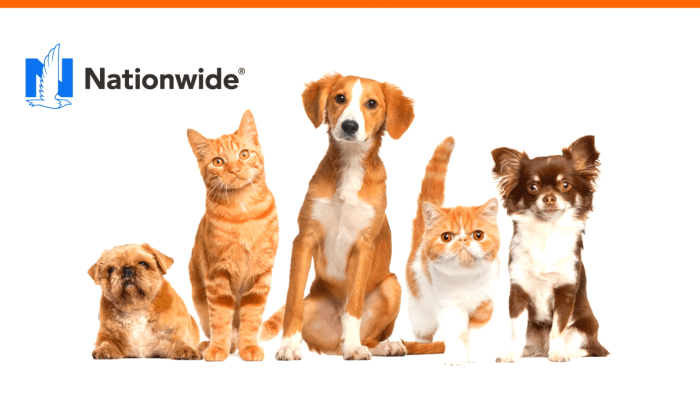Spain’s burgeoning pet insurance market reflects a growing societal shift: the increasing humanization of companion animals. This translates into a rising demand for comprehensive pet healthcare coverage, driving significant market expansion and fierce competition among insurers. Understanding the nuances of pet insurance in Spain—from policy types and premiums to claims processes and legal protections—is crucial for responsible pet ownership.
This in-depth analysis delves into the Spanish pet insurance landscape, examining key players, policy features, and the factors influencing costs. We’ll dissect the claims process, explore regulatory frameworks, and forecast future trends, equipping pet owners with the knowledge to make informed decisions about their furry friends’ well-being.
Future Trends in the Spanish Pet Insurance Market

Spain’s burgeoning pet ownership, coupled with increasing pet humanization, is fueling rapid growth in the pet insurance market. This expansion, however, is not without its evolving dynamics, shaped by technological advancements and shifting consumer preferences. Understanding these trends is crucial for insurers seeking to capitalize on this lucrative sector.Technological Advancements Impacting the Industry
Telematics and Data Analytics in Pet Insurance
The integration of telematics and data analytics is poised to revolutionize the Spanish pet insurance landscape. Wearable devices for pets, similar to fitness trackers for humans, can monitor activity levels, sleep patterns, and even detect early signs of illness.
This data, analyzed through sophisticated algorithms, allows for more accurate risk assessment, personalized pricing, and proactive health management. Insurers can offer discounted premiums to pet owners who actively monitor their pet’s health via these devices, fostering a preventative healthcare approach.
For example, a company could offer a 10% discount on premiums for dogs whose activity levels, as tracked by a smart collar, consistently meet recommended daily exercise targets. This incentivizes responsible pet ownership while refining risk profiles and reducing claims.
Artificial Intelligence and Chatbots for Customer Service
Artificial intelligence (AI) is transforming customer service in the pet insurance sector. AI-powered chatbots can handle routine inquiries, process claims more efficiently, and provide 24/7 support, improving customer satisfaction and reducing operational costs. Imagine a scenario where a pet owner can instantly file a claim through a mobile app, with the AI chatbot verifying eligibility and providing an estimated payout within minutes.
This immediate feedback loop enhances transparency and streamlines the claims process, building trust and loyalty.Changes in Consumer Demand for Pet Insurance in Spain
Increased Demand for Comprehensive Coverage
As pet ownership becomes more prevalent and pets are increasingly viewed as family members, demand for comprehensive pet insurance coverage is expected to rise. Consumers are increasingly seeking policies that cover a wider range of illnesses, injuries, and treatments, including preventative care, alternative therapies, and even behavioral issues.
This trend is driven by a willingness to invest in the long-term health and well-being of beloved pets, mirroring the growing trend towards comprehensive healthcare for humans. For example, the inclusion of coverage for chronic conditions like diabetes or arthritis is becoming increasingly important to pet owners.
Growing Preference for Digital Interactions
Spanish pet owners are increasingly comfortable interacting with insurance providers digitally. This preference for online platforms, mobile apps, and digital communication channels necessitates a shift towards a more digitally-focused approach for insurance companies. Seamless online purchasing, claims management, and customer service are becoming crucial differentiators in the market.
Insurers who fail to adapt to this digital-first mentality risk losing market share to more agile competitors. A successful example would be an insurance provider offering a completely paperless onboarding process and a user-friendly mobile app for managing policies and claims.
Illustrative Case Studies of Pet Insurance Claims in Spain

Understanding the practical application of pet insurance in Spain requires examining real-world claims. The following case studies illustrate both successful and unsuccessful claims, highlighting the importance of policy details and the claims process. These examples are based on publicly available information and generalized experiences reported by Spanish pet insurance providers.
Specific details have been altered to protect client confidentiality.
Successful Claim: Lola, the Labrador Retriever
Lola, a seven-year-old Labrador Retriever, suffered a cruciate ligament rupture during a playful romp in the park. Her owner, Señora Garcia, immediately took her to a veterinary clinic, where X-rays confirmed the injury. Señora Garcia had a comprehensive pet insurance policy with a leading Spanish provider, “Seguros Mascotas,” which covered surgical procedures.
The total veterinary bill amounted to €2,800, including surgery, post-operative care, and physiotherapy. Señora Garcia submitted her claim with all necessary documentation, including veterinary bills, X-rays, and the insurance policy. Seguros Mascotas processed the claim within three weeks, approving the full €2,800 payment after a brief review of the documentation.
The efficient and transparent process left Señora Garcia highly satisfied with her insurance provider.
Unsuccessful Claim: Pepe, the Persian Cat
Pepe, a ten-year-old Persian cat, developed chronic kidney disease. His owner, Señor Rodriguez, sought treatment at a specialized veterinary clinic, incurring substantial costs over several months. Señor Rodriguez held a basic pet insurance policy with “Proteccion Animal,” which had a lower coverage limit and excluded pre-existing conditions.
While Pepe’s kidney disease was not pre-existing at the policy’s inception, the insurer argued that certain underlying genetic predispositions common in Persian cats contributed to the condition, thus potentially classifying it as a pre-existing condition under the policy’s fine print.
The claim for €1,500 in veterinary expenses was initially denied. After a lengthy appeal process involving detailed medical records and veterinary consultations, Proteccion Animal partially covered the claim, paying only €500. This experience highlighted the importance of carefully reviewing policy exclusions and coverage limits before purchasing pet insurance.
Conclusion

Navigating the complexities of pet insurance in Spain requires careful consideration of various factors, from breed and age to pre-existing conditions and the insurer’s claims process. By understanding the market dynamics, comparing policy offerings, and being aware of consumer rights, Spanish pet owners can secure the best possible protection for their beloved companions.
The proactive approach to pet insurance reflects not only financial responsibility but also a deep commitment to animal welfare.

